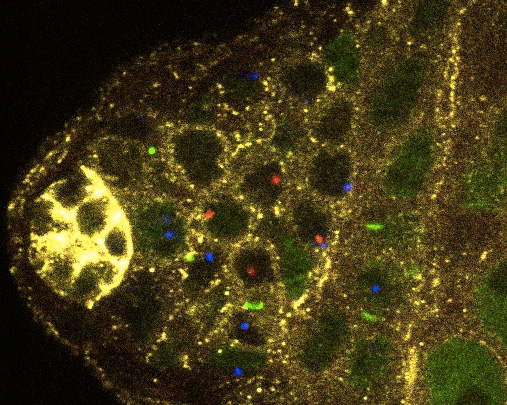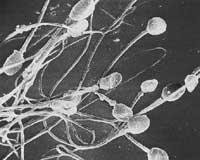Stem cells clarify some of the keys to the mechanism to create different types of cells
2013/05/10 Lakar Iraizoz, Oihane - Elhuyar Zientzia

A team of researchers from the University of Michigan has presented for the first time a clear test on how stem cells move to specialized cells. In fact, all cells have the same genetic information as eggs and sperm when forming the zygote. All the others come from the duplications of this single cell, which differentiate and specialize as stem cells bend.
The research has tried to find out what this differentiation is due to, that is, how two different cell lines emerge from a stem cell. Specifically, the study analyzed the stem cells of the testicles of the fruit fly (Drosophila). In fact, these stem cells, when folded, give another stem cell and a cell (gonioblasto) that reaches the arrival of the sperm.
Well, the researchers marked copies of all chromosomes and were able to analyze how they move from the original cell to the posterior cells. As seen, the X and Y chromosomes moved differently from each type of cell. Researchers believe that this will depend on the type of cells. “We still don’t know why copies of the X and Y chromosomes move in a non-random way. They may transmit specific epigenetic information to each type of cell,” explains the researcher at the Yamashita group in Yuki.
As a next step, it is to check whether this differentiated distribution observed in the fruit fly is also given in mammals.

Gai honi buruzko eduki gehiago
Elhuyarrek garatutako teknologia





